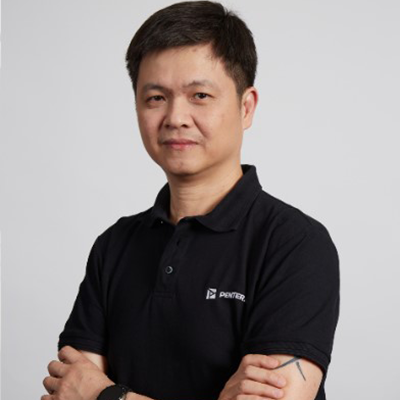Q1. The Biden Administration's new national cybersecurity strategy emphasizes the need for stronger collaboration and partnership among public and private sector organizations. What are some areas where such collaboration can make the biggest difference—not just in the US but elsewhere as well? What do you foresee as some of the biggest implementation challenges?
As shared in this article, at Microsoft we share the strategy’s vision, and believe that focused work across the outlined objectives can fundamentally enhance cyber readiness in US, Asia and around the world. We’re encouraged by the focus on public-private collaboration and are steadfast in our commitment to working with the U.S. government and governments that share the administration’s strategic vision around the world, to rapidly strengthen our collective cyber-risk posture while also helping to ensure our future resiliency. Microsoft will continue to build secure products and services through our innovative engineering practices while also offering customers security services powered by AI and other breakthrough technologies, helping to protect individuals, businesses and governments.
Microsoft’s collaboration with federal partners to disrupt and dismantle threat actors, also demonstrates the value of iterative efforts and partnership. Our Digital Crimes Unit has been fighting cybercrime, protecting individuals and organizations, and increasing cyber criminals’ operational costs since 2008, with active presence in Asia. In recent years, our growing collaboration on disruptions with law enforcement, security firms, researchers and others, has increased our scale and impact. We are continuously working on new actions to disrupt criminals and protect the digital ecosystem, consistent with the goals of the strategy.
Each disruption of cybercrime infrastructure brings forward lessons learned, and we know that faster collaboration among invested defenders with a shared threat context means we can align efforts and have a much broader impact, protecting more people and organizations while criminals are forced to regroup. To facilitate more agile “threat-specific collaboration,” we support the strategy’s goal of leveraging nonprofit hubs and temporary cells that effectively bring together trusted operators in the US and here in Asia.
Read more on Microsoft’s perspective here.
Q2. What do you expect will be the primary drivers for cybersecurity spending for the rest of 2023? On what technologies and services are organizations spending the most, and why?
People are now the primary attack vector and represent the greatest vulnerability to an organization’s security, and as noted in a recent industry study identity-driven attacks account for 61 percent of all breaches. The risk-to-return ratio makes these human-centred attacks irresistible for cybercriminals.
Our internal defender community continues to track the rise of ransomware as a service (RaaS). As examined in the August 2022 issue of Cyber Signals, RaaS enables cybercriminals to rent or sell ransomware tools in return for a portion of the profits.
In the December 2022 issue of Cyber Signals, we shared new insights on the risks that converging IT, Internet of Things (IoT), and operational technology (OT) systems pose to critical infrastructure. As with IT security, a solid defence based on Zero Trust, effective policy enforcement, and continuous monitoring can help limit any potential blast radius.
Recently IDC stated that, in 2023, security spending in Asia Pacific will grow 16.7% over the previous year, despite the economic slowdown and general sentiment of uncertainty. This is due to exponential rise in cyberattacks in this region, evolving regulatory landscape, digital transformation initiatives, and hybrid workforce trends.
At Microsoft, our approach to cybersecurity is that of continuous innovation, simplification and automation. Microsoft has been at the forefront of integrating automation and machine learning into all our products. We want to assist our customers to protect everything, from hybrid to multi-cloud scenarios, and we significantly invest in AI, with the recent announcement of Security Copilot, our newest tool to empower customers’ defenders to detect hidden patterns, harden defenses, and respond to incidents faster with generative AI.
Q3. What are Microsoft's plans at Black Hat Asia 2023? What is your messaging at the event?
At Black Hat Asia 2023, we will share our end to end approach to security, with sneak peaks into cutting edge work our engineers are doing on integrating machine learning and AI into our bouquet of security solutions, that now have the ability to extend protection from code to cloud, in hybrid and multi-cloud scenarios, with integration into a multitude of third party technology, extended by our vast network of partners in the region.










